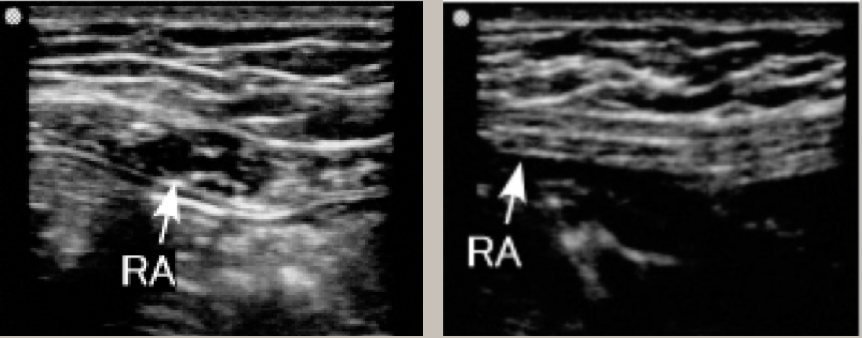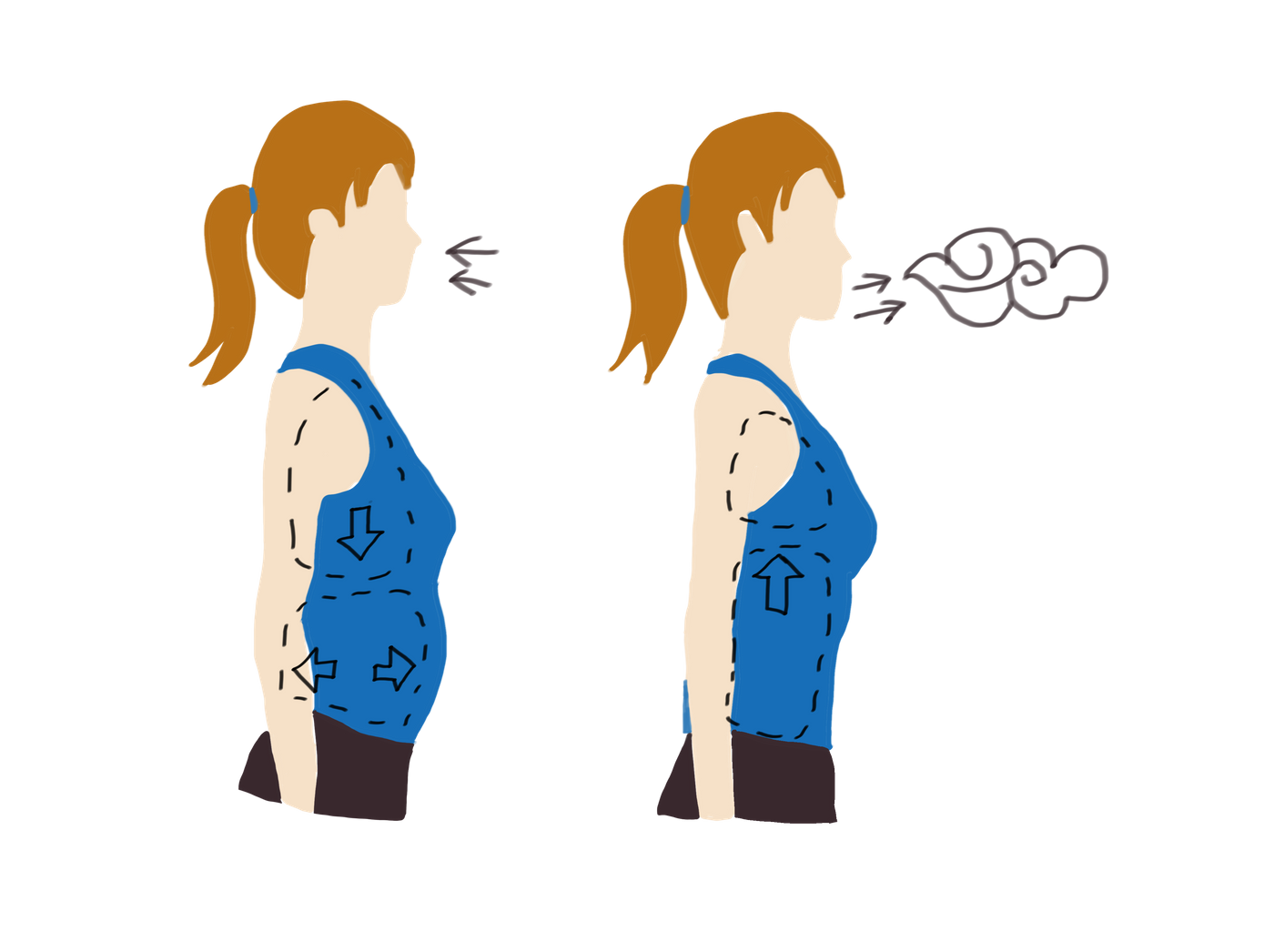How long does it take for a belly to recover after giving birth?
During pregnancy, the belly grows and grows in response to the growth of the fetus. "Abdominal muscle loosening", "rectus abdominis separation", "abdominal weakness" will also appear. After the belly is stretched, it may not return to its original appearance even after giving birth.
The lower left image is an ultrasound image of the rectus abdominis within one month after delivery. Muscles take on a wavy shape because they are loose.
The image below on the right shows the ultrasound appearance of the recovered rectus abdominis after childbirth. The muscles are arranged in parallel and tight.

I believe that many mothers look forward to recovering their body shape slowly over time, so how long will it take?
This article has the answer you are looking for.
Is it okay to do nothing?
There are a lot of things to deal with just after giving birth, and I often put myself in the back, and I can only let myself "recover at will". Some people will ask: If I do nothing, will my stomach heal itself?
We cut in from three angles: abdominal musculature deformation (appearance), core contractility, and abdominal muscle strength.
Organize past studies comparing postpartum and infertile women, measure various values of abdominal muscle group and core muscle group at various time points after childbirth, and compare how long it takes for the muscle conditions of the two to become consistent after childbirth.
|Deformation of abdominal musculature:
The thickness of the core muscles and the rectus abdominis becomes thinner and looser during pregnancy because of the enlarged belly.
It will take more than 6 months after giving birth to gradually return to the pre-production state.
|Core contraction ability:
During pregnancy, the abdominal muscles can also become looser and weaker due to prolonged stretching of the abdominal muscles.
The ability to contract the core muscles gradually becomes the same as in the inexperienced 4 months postpartum .
|Abdominal muscle strength:
The study used sit-up ability as a test.
The results showed that abdominal crunches did not gradually recover until 6–7 months postpartum .
So to answer the above question: Will my stomach feel better by doing nothing?
Answer: Yes, but it will take nearly half a year. It's not that it's all right after confinement. The most fearful thing is that the two fetuses are very close, and the body has not fully recovered and become pregnant.
How to speed up recovery
Instead of taking time to slowly regain your figure and body function, it is better to spend some energy on yourself!
Here are some suggestions, in order of difficulty:
|Sports
Post-production core movement is a must.
Through voluntary muscle contraction, the effect of muscle tightening is achieved. Exercise three days a week is recommended.
- Abdominal Breathing Exercise <br class="smart">Inhale through your nose into your abdomen, feel the bulge in your abdomen, and exhale through your mouth. 20 times a day.

2. Kegel exercises <br class="smart">Use the force of holding back urine or retracting anus to lift your pelvic floor muscles toward the top of your head.
If the movement is very skilled, you can do it together with standing squat, standing, and cat-cow.
Practice daily contractions for 5 seconds and then relax, repeat 20 times.

3. Core activation exercise <br class="smart">Use the lying position to achieve the most relaxed position of the body. Keeping your waist on the ground, lift your feet up. Practice 20 times a day.

4. Seated Backward Leaning Exercise <br class="smart">In the process of leaning back, try to keep the abdomen as tight as possible. Keep your back, spine and head in line. You can stay for 5-10 seconds and get up again. Repeat 20 times.

5. Stick <br class="smart">This exercise is suitable for mothers who are in good physical condition or who maintain exercise habits during pregnancy.
In this pose, the hands, feet and torso work together to keep the body like a "plank".

**Note** If you feel uncomfortable doing the above, please stop exercising and ask a physical therapist or physician.
The effects of exercise
1. Improve the appearance of waist and abdomen. I think this is what everyone wants
2. Muscle strength is improved, the transition from lying down to sitting up is not laborious, and it is easier to breastfeed or take care of children.
3. Promote the production of collagen, so that the separated rectus abdominis muscle gradually moves closer to the center. The reduction in the separation of the rectus abdominis leads to a better alignment of the muscles, better output of force and better stability of the body.
|Bellyband
Elders often advise mothers to wear a girdle after giving birth. The same is suggested in research.
The abdominal belt can pressurize the abdomen, make the abdominal muscles densely arranged, and indirectly increase the core function and muscle strength.
Another advantage is that it can be worn anytime, anywhere, anytime.
Past research suggests that it can be worn during the day in addition to bathing.
What can be achieved by wearing a corset
1. Improve the appearance of the waist and abdomen, and gradually tighten the loose abdomen.
2. Improve muscle strength, improve muscle strength by improving the alignment of muscles. However, for those with muscle atrophy during pregnancy or high postpartum BMI (BMI>25), the effect of wearing a corset to improve muscle strength is limited, and exercise is still required.
The above effects can be seen in about three months. If the two can be combined, the effect will be even better!
Production has changed a lot on the body, mind and work schedule. While learning how to play the role of a mother, don’t forget to take care of yourself too! Being able to get back in shape quickly after giving birth is also a small sense of accomplishment!
If you think this article is useful, please help me clap and share it~
References:
Fukano M, Tsukahara Y, Takei S, Nose-Ogura S, Fujii T, Torii S. Recovery of Abdominal Muscle Thickness and Contractile Function in Women after Childbirth. Int J Environ Res Public Health. . 2021;18(4):2130.
Deering RE, Senefeld J, Pashibin T, Neumann DA, Cruz M, Hunter SK. Fatigability of the Lumbopelvic Stabilizing Muscles in Women 8 and 26 Weeks Postpartum. J Womens Health Phys Therap. 2018;42(3):128–38.
Thabet AA and Alshehri MA. Efficacy of deep core stability exercise program in postpartum women with diastasis recti abdominis: a randomised controlled trial. J Musculoskelet Neuronal Interact. 2019; 19(1): 62–8.
Keshwani N, Mathur S, McLean L. The impact of exercise therapy and abdominal binding in the management of diastasis recti abdominis in the early post-partum period: a pilot randomized controlled trial. Physiother Theory Pract. 2021;37(9):1018 –33.
Like my work? Don't forget to support and clap, let me know that you are with me on the road of creation. Keep this enthusiasm together!

- Author
- More